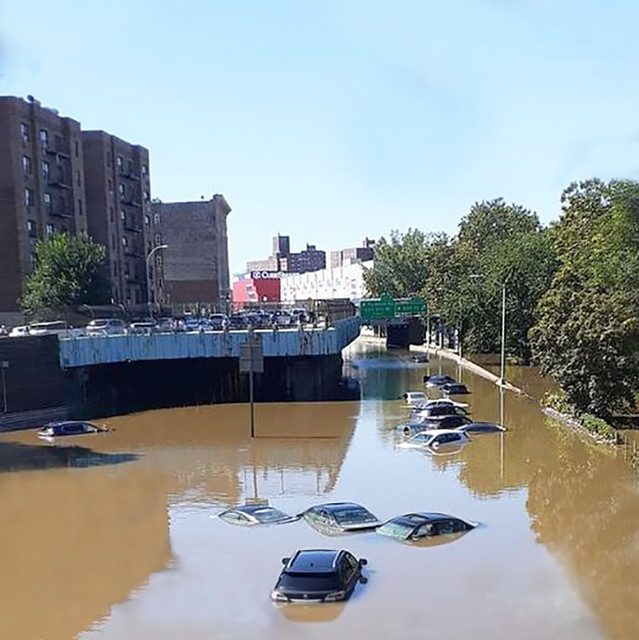
“Energy,” by Flickr user Raymond Bosma, CC BY-ND 2.0
The following op-ed is an expanded version of “Green States Better for Jobs,” that appeared in the Louisville Courier Journal on October 20, 2014.
How do you win an election in any red Southern state? If you are running as a senator the conventional wisdom is you condemn government as an enemy of working families rather than an institution for safeguarding health, safety and welfare of citizens. Senate candidates in Kentucky have run thousands of commercials attacking, “Obama’s war on coal” claiming it kills jobs and our “way of life.” When will the news media put these claims on a truth meter? Or, as Steven Colbert would say, what is their level of “truthiness?”
Republicans are convinced that most regulations kill jobs and the economy with the biggest villain being the Environmental Protection Agency (EPA). Presidential candidates even run on platforms that would eliminate the EPA. Democrats have also jumped on the bandwagon thinking they can win the South only by perpetuating the lie that clean air, water and soil protections kill jobs. Yet no reputable scholar or policy analyst can back up this claim with hard empirical data.
To test the argument that clean air regulations kill the economy, we ranked states by air quality index (United States Health Foundation) and unemployment levels (U.S. Bureau of Labor). It turns out that the unemployment rate in “clean” states is lower than in “dirty” states (4.2 percent versus 6.9 percent). Hundreds of thousands of workers have higher unemployment levels in dirty states according to Bureau of Labor Statistics.
More importantly, residents in states with clean air, water and soil live longer. For this reason alone we need EPA out there testing, measuring, regulating and advocating for a healthy environment. According to the Center for Disease Control the dirtiest states have the shortest lifespans. Alabama and Kentucky rank as having the shortest “healthy” lifespan at 62—meaning the average age in a state when citizens require a major health intervention. The lack of EPA regulation and the kind of jobs and products that are available explain why Kentucky is number one in cancer rates, number two in lung disease, and number eight in cardiovascular diseases according to the Kentucky Environmental Foundation. Even Senate Minority leader Mitch McConnell shocked Kentucky voters by stating in a recent candidates debate that “coal makes us sick.”
Even more ironic are politicians from both parties claiming they are trying to save jobs without realizing that most of the jobs they propose saving are in work sites that will kill you much sooner—coal mines, tobacco fields, and chemical factories. Working at these places or consuming these products will reduce your lifespan by many years. The national average for healthy life expectancy is 75. Oregon, one of the cleanest states, has the longest healthy life span at 78. With a 16-year difference in healthy life span, in which state would you want to live and work? Perhaps candidates who want to win the hearts and minds of voters should focus on job creation that extends life rather than protecting jobs that have hurt workers, neighborhoods, and our overheated earth.
Environmental protection is not a job killer, but educational failure is. The high school dropout rate in dirty states is 19 percent compared to 9 percent in clean states. Jobs are now going to those green states that attract the “creative class” that community development guru Richard Florida has demonstrated is critical for economic development. Nationally the unemployment rate for August 2014 is three times higher for high school dropouts (9.1 percent) than it is for those with a college diploma (3.2 percent)
A case in point is Portland, Oregon, now the “green capital of America,” not just because it is the only city that has reversed its carbon footprint, but also because it is experiencing an economic boom based on the “green” economy. Despite not having even one Fortune 500 Company, Portland has the largest percentage of college-educated residents of any midsize city in America. The population in Portland aged 25-34 years old with a college degree has increased by 50 percent from 1990-2000; five times the national average for the same period.
Portland is capturing that most coveted of demographics: the millennials who drive less, walk more, and are rediscovering the central city as a place to live. They seek out the growing job opportunities, cultural diversity, green amenities, and lifestyle that, compared to most cities, is more about community than commodities. Portlanders’ green lifestyle emphasizes reducing pollution and making goods that improve the world rather than destroy it.
Perhaps the fundamental divide is no longer between blue versus red states but rather green (clean) versus brown (dirty) states. Green states are winning with better job opportunities, cleaner environment, and longer lifespan. A set of facts worth noting, dirty states (save West Virginia) are controlled by Congressional Republicans and most of clean states are by Democrats (save Wyoming and South Dakota).
Democratic candidates in brown states should rethink their losing strategy of attacking environmental regulation. Most people (including Republicans) want clean air, water and soil in their communities. Democrats can win more elections by embracing healthy environments and higher education as keys to better employment opportunities, longer healthy life span and more sustainable communities.
The authors are members of the Scholars Strategy Network under the direction of Theda Skocpol at Harvard University. These views are independent of Harvard and the institutions they work for.





Comments